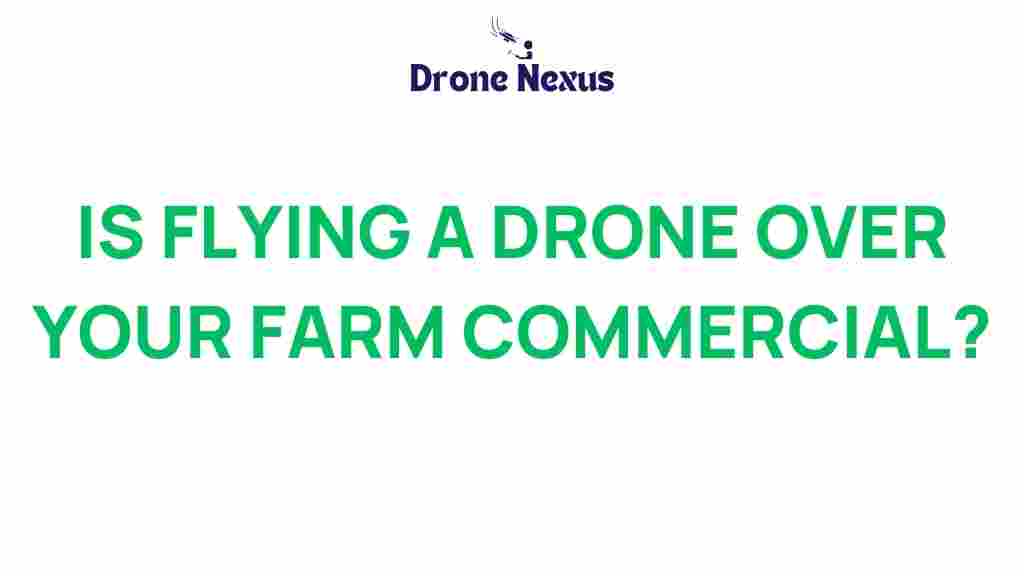Is Flying a Drone Over Your Farm the Future of Agriculture? Exploring Drone Technology
In recent years, the agricultural landscape has experienced a seismic shift with the introduction of cutting-edge technologies. Among them, drone technology stands out as a game-changer. Farmers are increasingly leveraging drones to enhance productivity, monitor crop health, and optimize resources. This article delves into the myriad ways drone technology is revolutionizing agriculture and answers the pressing question: Is flying a drone over your farm the future of agriculture?
The Rise of Drone Technology in Agriculture
Drone technology has emerged as a vital tool in modern farming. It allows farmers to gather data efficiently, offering insights that were previously difficult to obtain. Some of the notable applications of drone technology in agriculture include:
- Crop Monitoring: Drones equipped with high-resolution cameras can survey large areas of farmland quickly, providing real-time data on crop health.
- Irrigation Management: Drones can help identify areas requiring irrigation, ensuring that water resources are utilized efficiently.
- Pest and Disease Detection: Early detection of pests and diseases can save farmers significant resources and yield losses.
- Field Mapping: Drones can create detailed maps of fields, aiding in planning and decision-making.
How Drone Technology Works in Agriculture
The operation of drones in agriculture involves several key steps, which we will explore in detail:
1. Choosing the Right Drone
Before you can harness the power of drone technology, you must select the right drone for your agricultural needs. Consider the following:
- Payload Capacity: Ensure the drone can carry the necessary sensors and cameras.
- Flight Time: Longer flight times allow for more extensive coverage in a single flight.
- Camera Quality: High-resolution cameras are crucial for accurate data collection.
2. Obtaining Necessary Permissions
In many regions, flying drones for commercial purposes requires specific permits. Familiarize yourself with local regulations to ensure compliance.
3. Data Collection
Once you have your drone ready, the next step is to collect data. This involves:
- Flying the drone over your fields to capture images and other necessary data.
- Utilizing software to analyze the data collected during the flight.
4. Analyzing Data
Data analysis is a critical component of utilizing drone technology effectively. Farmers often use specialized software to interpret the data, identifying patterns and making informed decisions.
5. Implementing Changes
Based on the data analysis, farmers can implement necessary changes to enhance productivity. This could include adjusting irrigation schedules, applying fertilizers, or addressing pest issues.
Benefits of Using Drone Technology in Agriculture
The advantages of incorporating drone technology into farming practices are immense:
- Cost-Effective: Drones can save labor costs and reduce the need for extensive manual inspections.
- Time-Saving: Drones cover large areas in a fraction of the time it would take traditional methods.
- Precision Farming: With precise data, farmers can make informed decisions that lead to better yields.
- Environmentally Friendly: Drones help optimize the use of resources, leading to reduced waste and environmental impact.
Challenges and Troubleshooting Tips
Despite the benefits, there are challenges associated with drone technology in agriculture. Here are some common issues and troubleshooting tips:
1. Technical Issues
If your drone malfunctions or fails to operate as expected, check for:
- Battery life: Ensure the drone is adequately charged.
- Signal loss: Maintain a clear line of sight with the drone.
- Software updates: Keep your drone’s software updated for optimal performance.
2. Data Interpretation Challenges
Analyzing data can be complex. Consider the following:
- Invest in training: Take courses that focus on data analysis specific to agriculture.
- Use user-friendly software: Choose software that provides clear visualizations.
3. Weather Dependency
Drone operations can be heavily influenced by weather conditions. To mitigate this:
- Check weather forecasts: Plan flights during optimal weather conditions.
- Have backup plans: Be ready to reschedule flights if conditions are not favorable.
Real-World Examples of Drone Technology in Agriculture
Many farmers worldwide have successfully integrated drone technology into their operations. Here are a few notable examples:
- Precision Planting: A farm in California used drones to assess planting patterns, resulting in a significant yield increase.
- Pest Management: A vineyard in France utilized drones to monitor pest populations, reducing pesticide use by 30%.
- Irrigation Optimization: A farm in Australia used drones to map irrigation needs, leading to a 20% reduction in water usage.
Future Prospects of Drone Technology in Agriculture
The future of agriculture seems promising with the continual advancement of drone technology. Some anticipated developments include:
- Increased Automation: As drone technology evolves, we can expect more automated solutions for farm management.
- Integration with AI: Using AI alongside drones can enhance data analysis capabilities.
- Improved Regulations: As drone usage becomes more common, regulatory frameworks will adapt to accommodate these changes.
Conclusion
In conclusion, the integration of drone technology into agriculture is not just a trend; it’s a fundamental shift in how farming is conducted. From crop monitoring to irrigation management, the benefits are undeniable. As technology continues to advance, the future of agriculture will likely involve even greater reliance on drone capabilities, leading to more sustainable, efficient, and productive farming practices.
For those interested in diving deeper into the world of drone technology and its applications in agriculture, consider exploring additional resources, such as this comprehensive guide or check out industry publications for the latest developments.
This article is in the category Applications and created by DroneNexus Team

2 thoughts on “Is Flying a Drone Over Your Farm the Future of Agriculture?”